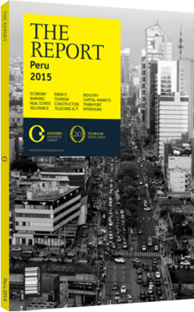Regulatory environment must make way for mass distribution
Microinsurance remains a very small part of the insurance industry in Peru, accounting for PEN3.5m-4m ($1.25m-1.43m) in premiums per year, depending on differing definitions of what constitutes microinsurance. The Inter-American Development Bank (IDB) has described Peru’s microinsurance market as “still minute, despite an array of product offerings”, all the more surprising given a potential consumer base of 23m.
Regulation
Microinsurance legislation was first established in Peru in 2007, with reforms in 2009 to expand access to underserved groups, reclassifying it as insurance that provides protection for losses arising from human or economic risks to low-income populations. This facilitated the development of specific regulations appropriate to the sub-sector.
Current regulations include several strong consumer protection provisions, covering limitations on the amount of information providers can demand from customers in the event of a claim, and requirements to settle claims within 10 days and resolve customer complaints regarding non-payment of claims within 15 days, as well as stipulations to simplify application procedures and contract language. Meanwhile, microinsurers must register with the Superintendence of Banking, Insurance and Pension Funds (Superintendencia de Banca, Seguros y Administradora de Fondos de Pensiones, SBS) and have their products reviewed prior to market introduction, in addition to periodically reporting the composition of their portfolios, number of clients and amount of claims made.
Distribution
In a June 2012 report the IDB suggested that microinsurance in Peru may have been slow to take off compared to other Latin American countries due in part to a “fairly restrictive” regulatory environment, which in turn has hampered the development of mass distribution models. Indeed, Mario Ventura, CEO of Seguros SURA, told OBG “the monopolisation of payment channels by a small number of banks and retailers could become a significant impediment to the development of the microinsurance market. Any third party who wishes to distribute a microinsurance product through these channels will see their margins eroded by the commissions that these intermediaries charge.”
Industry Development
The IDB identified two specific areas for improvement. Firstly, additional indicators and benchmarks are needed to accurately assess the impact of microinsurance strategies and analyse lacklustre consumer uptake. The IDB noted this could be due to low perceived value of current products, or geographically or culturally inaccessible distribution models. Some products also seem to be designed and priced in an ad hoc manner as a result of insufficient market research data and actuarial analysis, as seen through the high proportion of products covering life and health, while property, agriculture, and livestock protection – areas of at least equal concern to the likely consumers – are underrepresented.
Secondly, the SBS has a role to play in promoting consumer protection and financial education, to help inform the wider population of the benefits of microinsurance. A supportive approach to regulation is also needed for providers to draw on international best practices to engage customers. A 2013 study found insurance salespeople were able to almost triple sales to semi-literate consumers through a tablet-based approach, presenting information through audio and visuals instead of text. For microinsurers in Peru to adopt this tactic, changes would need to be made to current regulations, which require text-based contracts.
External Support
According to the IDB, Peruvian microinsurance would benefit from additional trained insurance and risk modelling professionals, including actuaries, statisticians and weather scientists, and more widely shared data between public and private bodies to encourage the development of relevant products. Multinational organisations like the World Bank can also provide support by sharing expertise and helping indirectly – for instance, by financing the rollout of mobile technologies, which enable microinsurance providers to reach more customers in a more cost-efficient way.
You have reached the limit of premium articles you can view for free.
Choose from the options below to purchase print or digital editions of our Reports. You can also purchase a website subscription giving you unlimited access to all of our Reports online for 12 months.
If you have already purchased this Report or have a website subscription, please login to continue.

